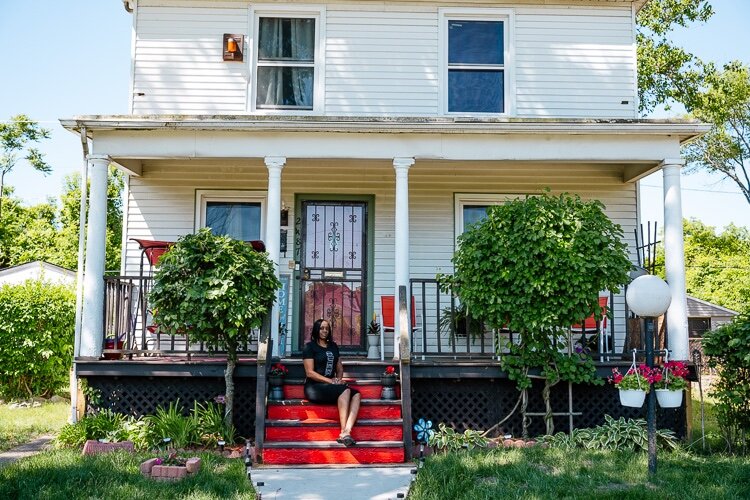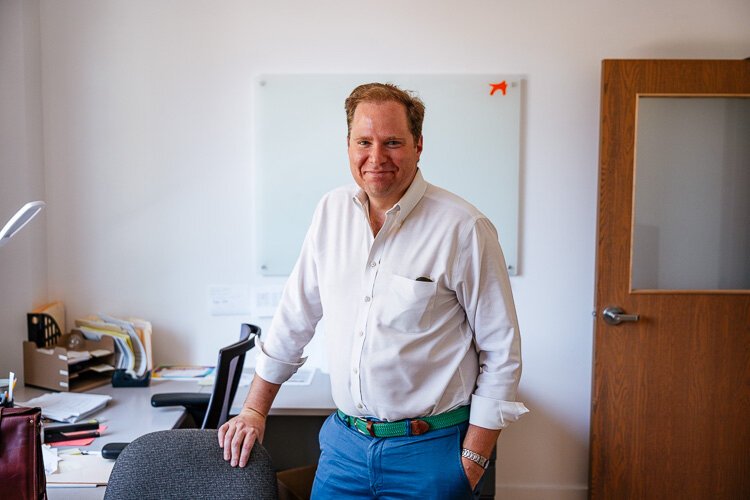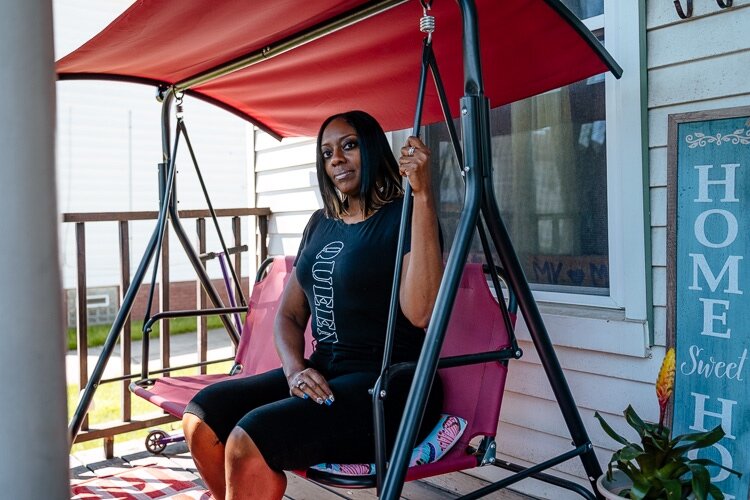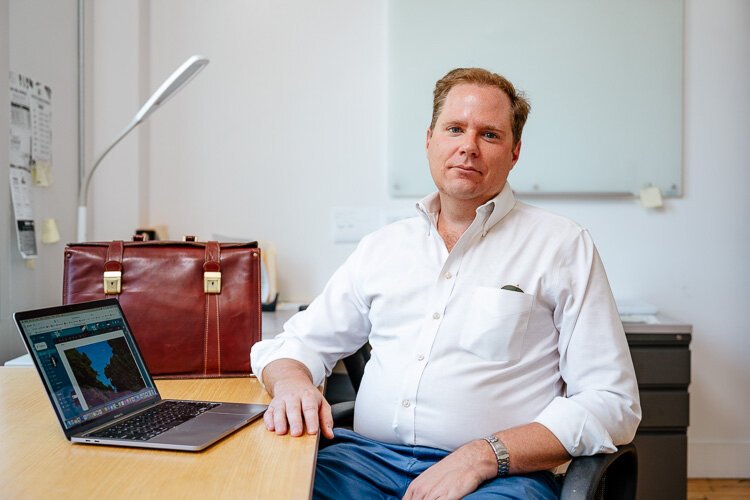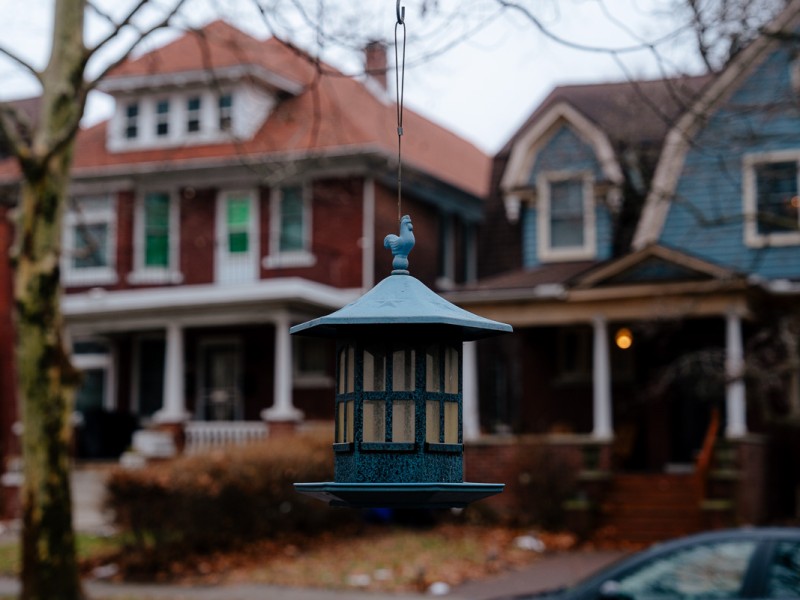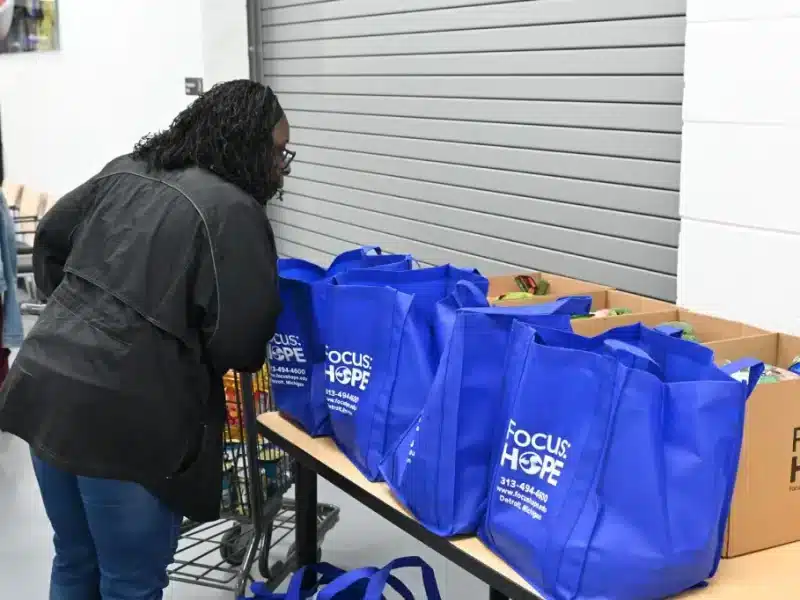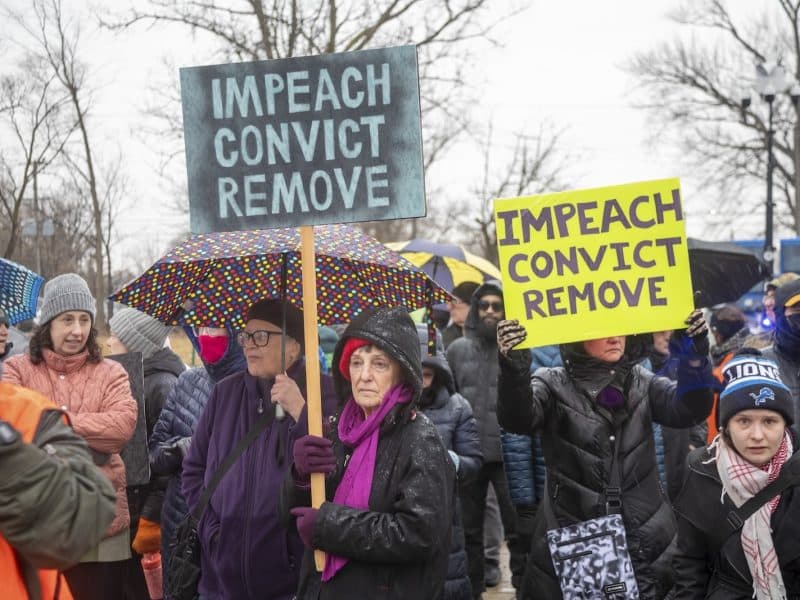Keeping Detroit homes in the family for future generations
Detroit has more than 5,000 existing heirs’ properties with deceased owners. One nonprofit is helping to keep properties in the family.
Poppy red stairs splash from the white house. Planters of brilliant geraniums hang. A front porch stretches wide to offer shade and swing. It’s a place to call home, alright.
In the yard, Jeanine gardens to keep ancestors happy. Digging in the dirt is her least favorite thing, but the generations of women who came before loved to make things grow. She carries their hard work and self-determination legacy, hoping to add a sense of tranquility.
“My great-grandmother was doing most things by herself; my grandmother was the same way, trying to do it all, working at the plant to ensure her daughter was set,” says the single mom, keeping up with a busy 10-year-old. “I’m doing the same thing, but because they worked so hard, I think I’m adding a sense of calmness where it’s okay just to sit down and stop moving. I don’t think they ever had the chance to do that.”
Calm describes her surroundings well in the Islandview neighborhood on Detroit’s east side. Grass lots sprawl where houses once stood, and neighbors have recently torn down old fences, leaving views stretching blocks from Jeanine’s 114-year-old porch.
“It’s not such a battleground anymore,” she says, remembering the gunshots she’d hear while talking with her grandmother over the phone before she came to take care of her in 2010. “You don’t have to put up the barriers now. It’s more welcoming.”
Baldwin Street had been Jeanine’s second home since she was a child. She grew up visiting her grandmother and great-grandmother at the house she now owns, which her great-grandmother purchased when she came to Detroit from Georgia about 75 years ago, seeking a fresh start. After finding steady work as a house cleaner, she returned south to get her daughter and 8-year-old granddaughter (Jeanine’s mom) and bring them to join her in the Motor City.
“They said Michigan. They said Detroit. They said this area was where they wanted to settle,” says Jeanine.
The three generations of women made up the third Black family to move onto their block, which was densely built with houses in the 1950s.
Jeanine remembers block parties as a kid, walking to the penny candy store, and neighbors cutting their lawns on the same day to give the street a uniform look. She also remembers people moving and the blight and crime that followed through the late 1980s, 90s, and early aughts. She’s encouraged to see people returning to the neighborhood, not just settling but restoring and taking the time to get to know people.
“People out walking, kids riding their bikes…I mean, most people at the dog park don’t have dogs, but they’re coming just to sit and kind of catch up on what’s going on in the community,” she says. “It’s wonderful to see.”
She says organizations like The Villages CDC and MACC Development have been major community stabilizing factors over the past few years. Old houses like hers require lots of love and care, and few simple or inexpensive projects exist.
Through The Villages CDC’s estate planning and home repair program, Keeping It In The Family, Jeanine has been getting the support she needs to incrementally maintain the heirloom her grandmother gifted her and preserve it for future generations.
An on-ramp for future resources
With a modest budget of $2,500 per household, The Villages CDC, a non-profit organization growing economic development in a collection of neighborhoods on Detroit’s east side, is helping generations hold on to their family home.
The program, created by Mac Farr, executive director of The Villages CDC, and board member Edythe Ford, was born out of residents continually saying they didn’t qualify for city home repairs and tax assistance programs because they didn’t have a clear title on their house or were behind on utilities and property taxes.
“These items were structural barriers to people being able to take advantage of the universe of programs out there,” says Farr. “And there wasn’t an on-ramp for these folks to become eligible for the other programs.”
According to a recent report by Detroit Future City, Detroit has at least 5,525 existing heirs’ properties, all of which have deceased recorded legal owners. The highest concentration is in the Boynton, Bagley, Airport Sub, and Schaefer 7/8 Lodge neighborhoods, but these houses exist throughout the city.
The report defines an “heirs’ property” as a family-owned property inherited through generations or passed to recipients without formal legal proceedings to prove ownership. If there is no will, the property gets passed to the family through “intestate succession,” which can result in ownership by multiple people. In other cases, the property passes through a will, but the transfer never clears probate court to legally transfer the title.
The report says these 5,525 heirs’ properties are collectively worth over $268 million, indicating the potential for significant wealth loss if the issue persists. Some drivers for increased risk are the share of individuals over 65 living alone and parcels with quit claim deeds filed.
Farr says if research shows this from seven years of data (all recorded owners died between 2014 and 2022), there are probably two to three times as many properties in Detroit that have this situation that needs correcting for the home to remain in the family.
When there isn’t a clear plan for a house, and people can’t take advantage of it, it’s more likely to fall into disrepair, become abandoned, and be torn down.
“This program helps prevent that from happening,” Farr says. “We’re buttressing our population. We are reducing blight. We are helping to create intergenerational wealth and reduce displacement. I have yet to come across a program that strikes so many themes with such a small amount of money.”
The Keeping It in the Family program starts with a title search to determine house ownership. If the title is unclear, they hire attorneys and case-manage the process for a participant to go through a quiet title (clarifying ownership) or probate action, which transfers the property from the deceased’s estate into the current occupant’s name.
In partnership with Elder Law of Michigan, the program helps owner-occupants draft a will and create a “Lady Bird” deed, where they can name the beneficiary or heir of their house to prevent their child, grandchild, sibling, etc. from going to probate court.
Farr says the longer you wait for probate actions, the more complex and expensive they are to complete. This often risks legal chaos when members of multiple generations must sign off on the house. The more people the program can help establish a Lady Bird deed, the better.
“Just working with a Michigan Attorney at no cost is huge,” Jeanine says. She recently worked with Farr’s team to ensure her house would go to her daughter one day without hiccups. “If I walked in by myself and said I want to get my house in a trust with all the fees associated and court costs and documents, it’s like a minimum of $2,000.”
She feels peace of mind and grateful not to worry about her home in that way. “I try to pay it forward, knowing that I was just an application on a desk, and it took people sitting down trying to grasp the detail of it all and helping hands came in,” she says.
Once occupant ownership is signed, sealed, and delivered, Farr’s team refers participants behind in taxes and utilities to other programs focused on helping residents with assistance in these areas. If there’s money left in the $2500 coffer, minor home repairs are made.
This is what gets people in the door, he says. Home repairs are essentially the cake that follows the program’s “eat your vegetables” component, which often isn’t very satisfying for homeowners. The program looks for medium-size projects or “Goldilocks repairs,” big enough to make a functional difference or improve the residents’ safety: removing dead trees, putting in a mobility ramp, replacing a few windows, etc.
Jeanine had pipes on her property replaced when her tap water didn’t pass the lead inspection the team conducted. They worked with the city to replace the pipes and sidewalk in front of her house. She’s now working with contractors to update her house’s old electrical system. She says she knows the work will cost more than her program budget, and the process may slow until she can save what’s needed, but just knowing where to start and how to move from one repair to the next takes a weight off.
Because most houses in the program are nearly 100 years old, Farr says more home repairs are always needed than the program can provide. His team aims to help folks get the ball rolling. As the CDC becomes aware of new opportunities for funding and other home repair stabilization programs, it will sign clients up as they qualify.
The Villages serves a wide variety of neighborhoods, from Indian Village to its adjacent East Village, which house very socioeconomically different communities and everything in between.
“We have a lot of households that are in extreme need,” Farr says. “And in The Villages, like Detroit, our demographics run older than Michigan and the nation. So we have a lot of seniors and a lot of need, and this is a way that we can actually help do a couple of things all at once with relatively modest investments.”
To address a significant roof repair needed at her house, Jeanine accessed the U-SNAP-BACS owner-occupied home repair program, which she learned about through The Villages CDC. She says it took her two years to save half of the cost, over $11,000, but the grant paid the other half. Getting that major work done lifted her spirits and gave her a vision to address, little by little, what else needed fixing in the home.
“If I don’t know where to start, Mac puts me on some trail, some pathway,” she says. “Okay, we have five places; three of them may not work, but try them all, [he says] “And then the last two end up. ‘Okay, well, let’s see what we can do.’”
Since its first cohort in 2022, Keeping It in the Family has served nearly 30 households. The nonprofit is applying for grant funding to widen its net and expand the program to other community development organizations in Detroit. Residents of The Villages with an income level of less than 200% of the Federal Poverty Level (FPL) will have the opportunity to apply for the organization’s fifth cohort by early next year at the latest.
What makes a house a home
If you ask Jeanine if she would rather live somewhere else in a house that requires less attention and less work to maintain, she says no, she wouldn’t have it any other way.
“We take ownership for granted, especially in the African American community,” she says. “Where, if everything else is going horribly wrong around you [you can] know that you have a home to go to that’s not in jeopardy of anything. It’s peaceful.”
“If I didn’t have this place, I would be caught up in the rest of the hustle and bustle with the city of Detroit right now. Right now, you almost can’t find a home,” she says. “The people that left all those years ago, they can’t come back because there’s nowhere to come.”
Jeanine was raised by her mother on the city’s west side, visiting her grandmother once or twice weekly. In her twenties and thirties, she regularly checked in with her grandmother. But after her daughter was born and her mother had died, it was those formative East Side family roots that called her home. With her grandmother ill, it was the perfect time to be together as a family and take care of each other. She laughs when remembering how her grandmother barely let her change her daughter’s diaper. Before she passed away, she held her toddling legacy for two years, caring for her daily.
It doesn’t seem that long ago when they were here together, Jeanine says, five generations of women; her great-grandmother must be smiling today to see all that she began.
“I not only want to maintain this home, but I want to add value to it. I want to make it where my daughter, if she decides to stay in Michigan, ‘Come and live here, keep the generations going.’ It’s no longer about survival mode. It’s flourishing. It’s pride.”
Resilient Neighborhoods is a reporting and engagement series examining how Detroit residents and community development organizations work together to strengthen local neighborhoods. It’s made possible with funding from The Kresge Foundation.
